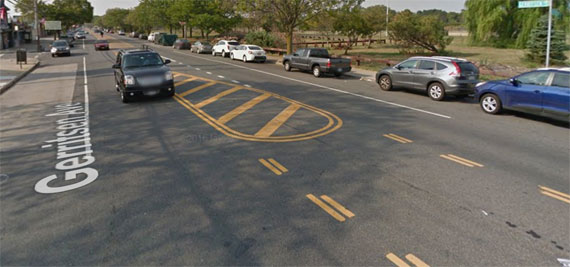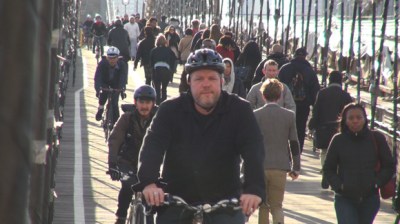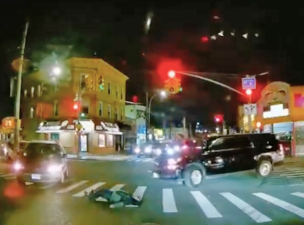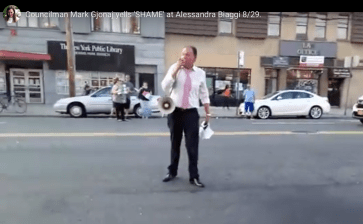State’s Highest Court Holds NYC Liable for Injuries on Streets Without Traffic Calming

The Court of Appeals, New York’s highest court, ruled that New York City and other municipalities can be held liable for failing to redesign streets with a history of traffic injuries and reckless driving.
The ruling stems from a crash in 2004, when Louis Pascarella, driving “at least” 54 miles per hour in a 30 mph zone, struck 12-year-old Anthony Turturro as he rode a bike on Gerritsen Avenue. Pascarella later pled guilty to assault.
A civil trial jury awarded Turturro $20 million, finding the city 40 percent responsible for the crash. The city appealed, and the case made its way to the Court of Appeals, which last month rendered a 6-1 finding in favor of Turturro.
“This decision is a game-changer,” says Steve Vaccaro, an attorney who represents traffic crash victims. “The court held that departments of transportation can be held liable for harm caused by speeding drivers, where the DOT fails to install traffic-calming measures even though it is aware of dangerous speeding, unless the DOT has specifically undertaken a study and determined that traffic calming is not required.”
At trial, Turturro’s attorneys presented evidence that in the years before the crash, residents asked the city to take measures to calm traffic on Gerritsen, which locals described as a “racetrack.”
DOT subsequently conducted studies at three intersections, according to court documents, and “notified police of the speeding problem after each study.” But DOT didn’t look at the incidence of speeding along Gerritsen Avenue as a whole, and failed to follow up with NYPD to determine if speeding was still a problem.
Prior to the crash, DOT did not study potential traffic-calming measures like narrower lanes or raised crosswalks for Gerritsen, the court noted.
From the decision by Justice Eugene Fahey:
Plaintiffs’ expert testified that it was known among traffic engineers that straight, wide roads with little interference from pedestrians and other vehicles, such as Gerritsen Avenue, encourage speeding because drivers feel more comfortable on roadways with those characteristics. He testified that traffic calming measures deter speeding because they cause drivers to be more cautious, and that such measures are known to reduce the overall speed on roadways.
“There was a rational process by which the jury could have concluded that the City’s negligence was a proximate cause of the accident,” Fahey concluded.
Transportation Alternatives Executive Director Paul Steely White said the court’s decision should prompt Mayor de Blasio to “make a greater investment in street safety redesigns” in the next city budget. For the last two years the mayor has resisted calls from the City Council to increase funding for Vision Zero street improvements.
“This ruling from New York’s highest court puts an end to the notion that traffic safety improvements should be subject to debate and contingent on unanimous local opinion,” White said.
Vaccaro said the decision “will create an affirmative obligation on the DOT’s part to — at the very least — conduct studies to determine whether infrastructure can reduce traffic violence, and unless such studies indicate otherwise, to install the infrastructure.”

In 2005, DOT converted Gerritsen from four lanes to three and installed a painted median in the vicinity of Gotham Avenue, where Turturro was struck. DOT proposed concrete pedestrian islands and painted bike lanes in 2008 and 2009, but dropped the plans after locals objected.
Four people have died in collisions on Gerritsen since 2007, including a motorist who in 2015 crashed through a gate and a retaining wall, landing in a creek. “I’m afraid of them coming right through the window,” said a resident who spoke with the Times about street racing on Gerritsen.
Last July, a drunk driver killed 17-year-old cyclist Sean Ryan near the site of the crash that injured Turturro. DOT responded with a plan for a two-way protected bike lane and concrete pedestrian islands. Installation got started in the fall, though some people still oppose safety measures for the street.
“The City is firmly committed to Vision Zero investments in street redesigns and enforcement that save lives,” de Blasio spokesperson Austin Finan told Streetsblog in an email. “No legal decision will change that.”



